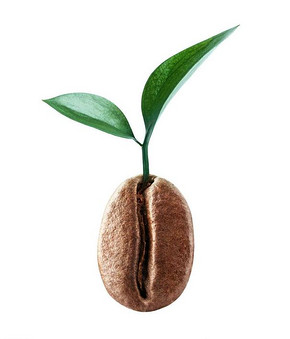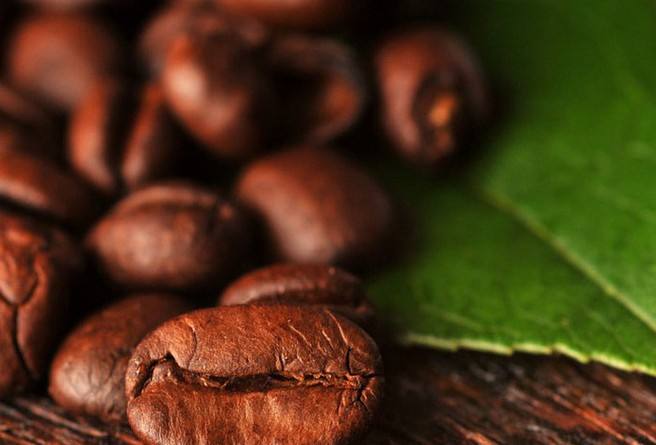Introduction to the taste and flavor of coffee beans in Elida Manor, Panama
Panama has one of the highest volcanoes in Central America: Mount Baru. The Baru volcano has an altitude of more than 3474 meters, and the surrounding land is nutritious and balanced, providing sufficient conditions for the sowing and cultivation of Panamanian coffee. Cold air streams converge and flow above 2262 meters in the Central Mountains, creating a variety of microclimates in the Bouquete and Volcan regions. The microclimate of the Panamanian highlands, as well as fertile soil, abundant precipitation, suitable temperature and height, have become a unique resource for the cultivation of quality coffee in Panama.
Bokuidi is a small town in the westernmost province of Chiriki in Panama. it has always been the most high-profile coffee producing area in Panama, and the surrounding mountains are known as the "promised land for coffee". The coffee paradise of Panama has given birth to a lot of high-quality coffee and created many top coffee estates. there are numerous coffee stars, some of which are enough to make coffee gluttons salivate. This time, I would like to share with you the La Esmeralda Manor, that is, the Emerald Manor in Bokuidi. And Elida Manor.

Coffee beans details:
Country: Panama
Grade: SHB
Production area: Chiriqui province-Bokui Special District
Baking degree: medium baking
Altitude: 1670 to 1850 m
Harvest time: January to April each year
Treatment method: honey treatment
Variety: Kaduai
Manor: Elida Alida Manor
Flavor: citrus, milk chocolate, almonds, round, bright, sour and sweet
Soil: volcanic sandy soil
Award record: Best of Panama 13th in 2006, 3rd in 2007, 10th in 2008, 5th in 2009, 6th in 2010
Elida Manor is high above sea level, and some of it is even located in the Panamanian National Park Reserve, with beautiful scenery, good air and rugged mountains, walking like a forest bath; the administrative district of Elida Manor is the town of Bouquete, arriving at Bouquete and then going along the river to the mountains, the owner Wilford will arrange for his friends to visit the nursery near his hometown and introduce the three main varieties of Elida: Catuai, Geisha and Criollo.
The processing plant of Elida is halfway between the nursery and the manor, it can also be said to be in the manor, but it is close to the outer edge, because we have to consider that the truck can arrive and carry. When we arrived, there happened to be a batch of sun beans being processed on the same day, next to the simple processing yard and the storage area with shell beans. Above the processing yard is the path to the coffee garden, which is more than 1800 meters above sea level. The path is very small, and only 4x4 vehicles can pass. The trees are lush and beautiful along the way.
Elida Manor has won the Best of Panama Cup Award for five years in a row! Panama is located at the end of Central America where it connects South America.
Elida Manor is located on the western border of Panama-chirqui-Boquete province, where the Baru volcano is one of the highest volcanoes in Central America, and the fertile volcanic soil provides the best nutrients for coffee. The Baru volcano is divided into seven different microclimate zones according to altitude, protected by national parks, prohibiting man-made development and hunting, and protecting precious and rare plants, birds and breast-feeding animals. Elida Manor has a total area of about 65 hectares, half of which are located in national parks, only 30 per cent of which grow coffee trees and the rest are virgin forests.
In addition to creating good coffee cultivation conditions, the Lamastus family, which runs the Elida estate, has also planted many different native tree species on the estate, not only to shade the coffee trees, but also to provide a friendly habitat for birds. In terms of fertilization, the Lamastus family uses artificial fertilization and a small amount of chemical fertilizers, but never uses pesticides and herbicides that are harmful to the environment. At present, in addition to Catuai, Typica and Bourbon, the Lamastus family also began to plant Geisha varieties a few years ago. In spite of this, Elida Manor used Catuai in all the batches of the Best of Panama competition, but achieved good results again and again, which shows the excellent quality and special flavor of coffee brought by its geographical environment and excellent postharvest treatment technology.
Honey treatment (Miel Process/Pulp Natural)
Miel means honey in Spanish, and the aim is to make coffee like sweet honey.
After harvest, the peel of the fruit was removed to retain the mucous membrane of the pulp layer, and it was directly placed on a high scaffolding for sun exposure without fermentation. In the natural drying process, you should often turn the fruit so that the pectin seeps evenly into the coffee beans. The whole process of honey treatment and refining requires strict control and turning to avoid bad fermentation flavor. The retained mucous membrane and pulp layer is easy to stick together, so it needs to be turned over and over manually.
Important Notice :
前街咖啡 FrontStreet Coffee has moved to new addredd:
FrontStreet Coffee Address: 315,Donghua East Road,GuangZhou
Tel:020 38364473
- Prev

Brief introduction of Rose Summer in Panamanian Jadeite Manor Flavor characteristics of Red, Green and Blue volcanic Rock Coffee beans
Following Kaibei (Wechat official account vdailycom) found that Beautiful Cafe opened a small shop of its own, Emerald Manor, which is famous for its Geisha variety. The rose summer seed was discovered in 1931 in the rose summer forest of Ethiopia and sent to the Coffee Institute in Kenya; it was then tossed around.
- Next

Panama coffee growing environment
Pay attention to the coffee comment (Weixin Official Accounts vdailycom ) and find a beautiful cafe to open its own shop. Central America is a long isthmus from northern Mexico to southern Colombia, connecting North America and North and South Africa. Panama is located in the southernmost part of Central America, so the country runs east-west, not north-south as everyone thinks. This means that the Caribbean
Related
- Detailed explanation of Jadeite planting Land in Panamanian Jadeite Manor introduction to the grading system of Jadeite competitive bidding, Red bid, Green bid and Rose Summer
- Story of Coffee planting in Brenka region of Costa Rica Stonehenge Manor anaerobic heavy honey treatment of flavor mouth
- What's on the barrel of Blue Mountain Coffee beans?
- Can American coffee also pull flowers? How to use hot American style to pull out a good-looking pattern?
- Can you make a cold extract with coffee beans? What is the right proportion for cold-extracted coffee formula?
- Indonesian PWN Gold Mandrine Coffee Origin Features Flavor How to Chong? Mandolin coffee is American.
- A brief introduction to the flavor characteristics of Brazilian yellow bourbon coffee beans
- What is the effect of different water quality on the flavor of cold-extracted coffee? What kind of water is best for brewing coffee?
- Why do you think of Rose Summer whenever you mention Panamanian coffee?
- Introduction to the characteristics of authentic blue mountain coffee bean producing areas? What is the CIB Coffee Authority in Jamaica?

